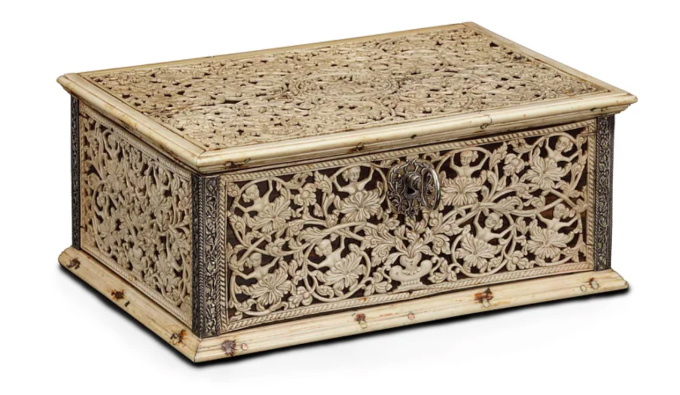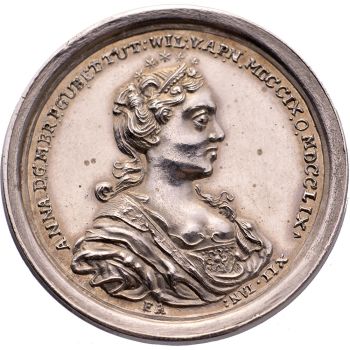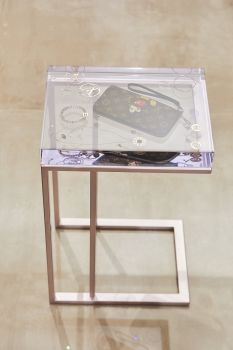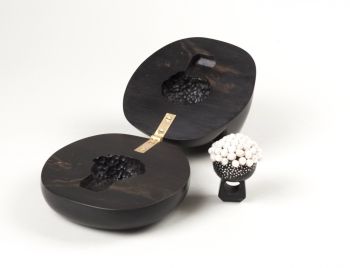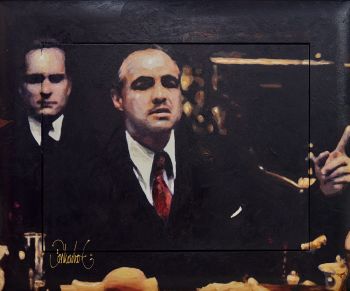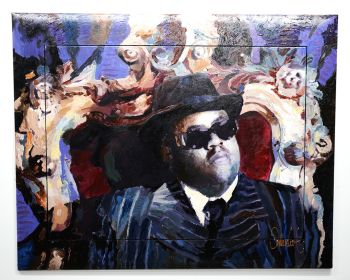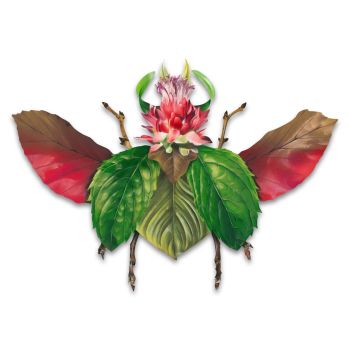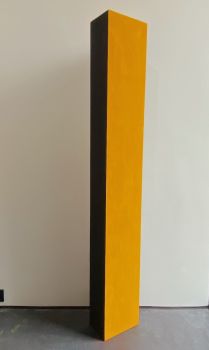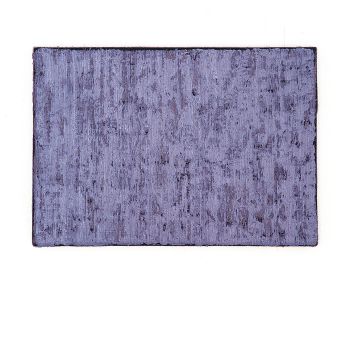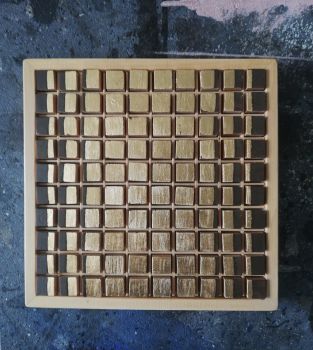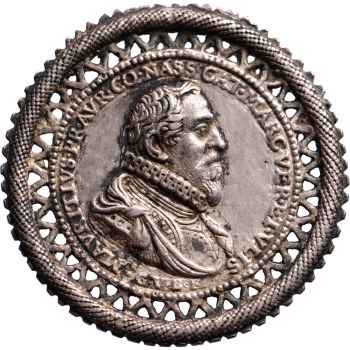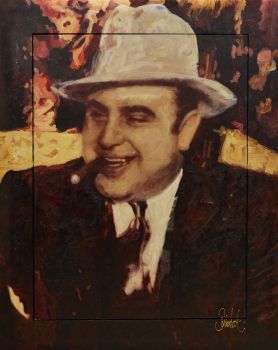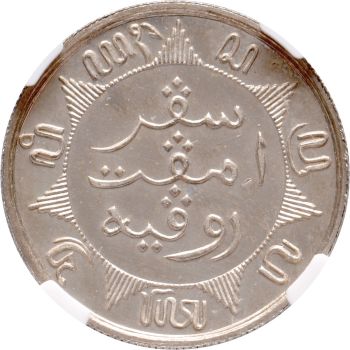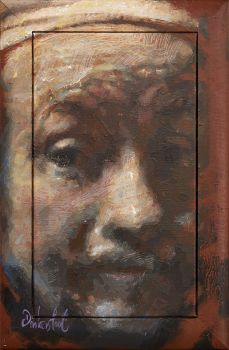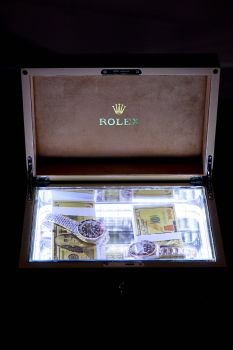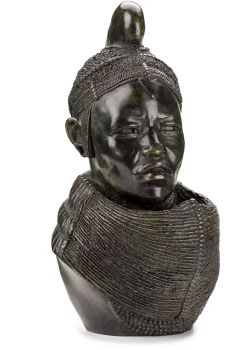A rare Portuguese-Sinhalese openwork ivory and ebony casket with silver mounts 1600 - 1650
Unknown artist
EbonyBoneWoodSilver
10 ⨯ 23 ⨯ 16 cm
Price on request
Zebregs & Röell - Fine Art - Antiques
- About the artworkThe ebony box with ivory borders and silver hinges, lock plate and corner mounts, is entirely covered with open work ivory panels. This type of work was typically done during the Portuguese period on Sri Lanka. The ivory decoration on the front, back and both sides consists of branches springing from vases and ending in flower bases from which women appear. The mythical climbing vines ending in the appearance of a woman are a very commen element in Kandyan design and known as nãri-latã-v!la “in all wise of perfect beauty, glorious in grace.” Like most other mythical things the Nãri-latã-v!la is supposed to grow in the himalayas where has been known to shake the resolution of hermits. The central decoration of the woman on top of the elephant holding flowers in both hands may be associated with the goddess Sri (Laksmi) the consort of Vishnu, the feminine beauty personified and goddess of fortune.
A similar box in the collection of the National Museum of Colombo is illustrated in Portugal e Ceilão, Pedro Dias, Lisboa 2006, p.179. - About the artist
It might happen that an artist or maker is unknown.
Some works are not to be determined by whom it is made or it is made by (a group of) craftsmen. Examples are statues from the Ancient Time, furniture, mirroirs, or signatures that are not clear or readible but as well some works are not signed at all.
As well you can find the following description:
•“Attributed to ….” In their opinion probably a work by the artist, at least in part
•“Studio of ….” or “Workshop of” In their opinion a work executed in the studio or workshop of the artist, possibly under his supervision
•“Circle of ….” In their opinion a work of the period of the artist showing his influence, closely associated with the artist but not necessarily his pupil
•“Style of ….” or “Follower of ….” In their opinion a work executed in the artist’s style but not necessarily by a pupil; may be contemporary or nearly contemporary
•“Manner of ….” In their opinion a work in the style of the artist but of a later date
•“After ….” In their opinion a copy (of any date) of a work of the artist
•“Signed…”, “Dated….” or “Inscribed” In their opinion the work has been signed/dated/inscribed by the artist. The addition of a question mark indicates an element of doubt
•"With signature ….”, “With date ….”, “With inscription….” or “Bears signature/date/inscription” in their opinion the signature/ date/ inscription has been added by someone other than the artist
Are you interested in buying this artwork?
Artwork details
Related artworks
- 1 - 4 / 12
Unknown artist
A rare Japanese export lacquer medical instrument box1650 - 1700
Price on requestZebregs & Röell - Fine Art - Antiques
Unknown artist
Japanese transition-style lacquer coffer 1640 - 1650
Price on requestZebregs & Röell - Fine Art - Antiques
Unknown artist
AN IVORY NETSUKE OF A DUTCHMAN FROLICKING WITH A SMALL BOY18th century
Price on requestZebregs & Röell - Fine Art - Antiques
 Curated by
Curated byDanny Bree
Unknown artist
A rare Japanese export lacquer medical instrument box1650 - 1700
Price on requestZebregs & Röell - Fine Art - Antiques
1 - 4 / 24 Curated by
Curated byDanny Bree
Unknown artist
The bell of the VOC fortress in Jaffna, Sri Lanka1747
Price on requestZebregs & Röell - Fine Art - Antiques
 Curated by
Curated byDanny Bree
Unknown artist
AN UNUSUAL INDONESIAN LOBBED SILVER DISHlate 17th
Price on requestZebregs & Röell - Fine Art - Antiques
Unknown artist
An Indian silver filigree casket with hinged coverearly 20th
Price on requestZebregs & Röell - Fine Art - Antiques
Unknown artist
A large Japanese Imari porcelain 'VOC Groningen' dish1800 - 1925
Price on requestZebregs & Röell - Fine Art - Antiques
Unknown artist
A MARINE IVORY NETSUKE OF A DUTCHMAN HOLDING A CHINESE FAN18th century
Price on requestZebregs & Röell - Fine Art - Antiques
Unknown artist
Dutchmen in miniature (Netsuke)1700 - 1900
Price on requestZebregs & Röell - Fine Art - Antiques
Unknown artist
Japanese transition-style lacquer coffer 1640 - 1650
Price on requestZebregs & Röell - Fine Art - Antiques
1 - 4 / 24- 1 - 4 / 24
Unknown artist
A large wall map of Asia by Nicolas de Fer 1647 - 1720
Price on requestZebregs & Röell - Fine Art - Antiques
Unknown artist
A GILT-SILVER SRI LANKAN DOCUMENT SCROLL CONTAINER 19th century
Price on requestZebregs & Röell - Fine Art - Antiques
Unknown artist
A MARINE IVORY NETSUKE OF A DUTCHMAN HOLDING A CHINESE FAN18th century
Price on requestZebregs & Röell - Fine Art - Antiques
Unknown artist
The Stamford Raffles Secretaires.1800 - 1813
Price on requestZebregs & Röell - Fine Art - Antiques
1 - 4 / 12

